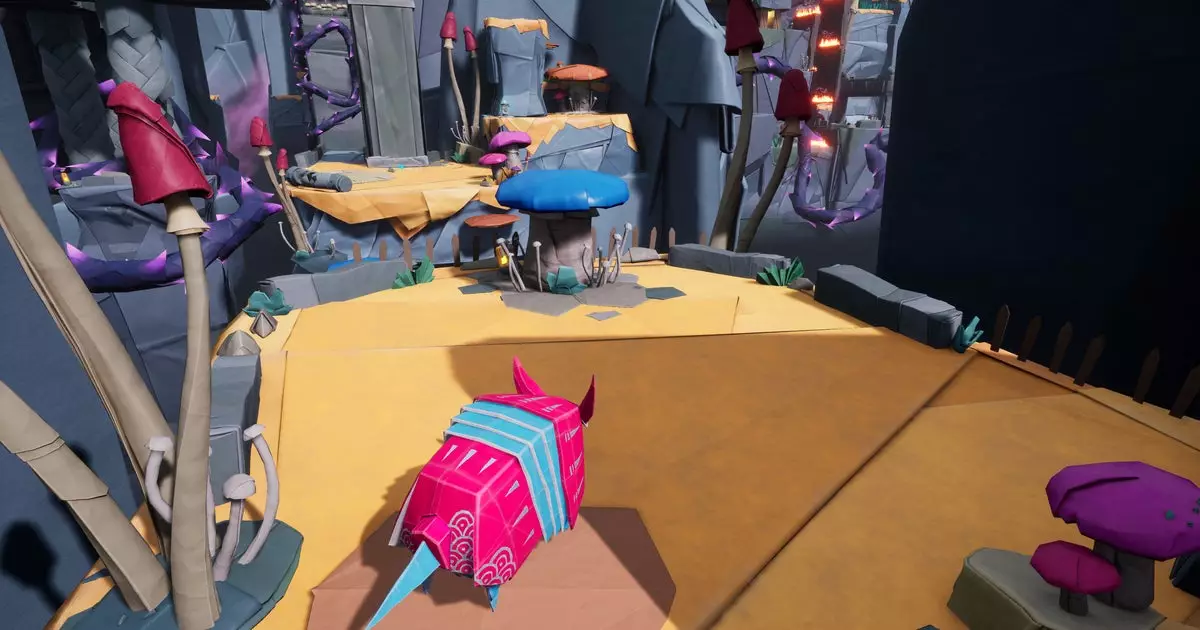In the ever-evolving landscape of video games, “Hirogami” stands out as a peculiar entry that explores the duality of digital innovation juxtaposed with nostalgia for the tactile art of paper. The irony is palpable: a video game extolling the virtues of origami, presented through the very medium that threatens traditional forms of artistry. The intricacies of this game reveal a deeper commentary on the state of creativity in our digital age.
At its core, “Hirogami” is a 3D action platformer that not only draws inspiration from origami but also positions paper as its protagonist’s identity. Players navigate as Hiro, a perky character crafted from paper, whose purpose is to restore balance to a world corrupted by digital blight. The game’s premise evokes a bittersweet sense of irony: in a digital landscape overrun by technology and virtual interactions, the game seeks to revive and pay homage to a medium steeped in authenticity and tradition.
This duality raises questions about the implications of utilizing such traditional crafts within a digital framework. Is there an inherent conflict when a game about defending the values of paper is itself a product of the very technological advances it critiques? It evokes a sense that Hiro, being a digital representation, is merely a metaphorical nod to the bygone era of print media and artistry that many lamented as “dead” in the wake of the internet.
The gameplay mechanics of Hirogami offer a fresh take on platforming by allowing players to morph into different origami creatures. This reflects an essential aspect of transformation that is intrinsic to both paper art and the video gaming experience. Players can become an armadillo capable of rolling through obstacles or glide effortlessly as a paper plane to navigate perilous pitfalls. This versatility and playful interaction capture the whimsical nature of origami while also engaging modern audiences with dynamic gameplay.
However, one could argue that the transformation gimmick runs the risk of overshadowing the profundity of its initial inspiration. While it’s visually enchanting to experience the fleeting beauty of paper-based characters, is this novelty sustainable, or does it risk becoming a mere façade? In an age where gamers crave deep narratives and meaningful engagement, merely wrapping dynamic mechanics in the aesthetic of fragility may not be sufficient to captivate the audience long-term.
One notable aspect of Hirogami is its lush art direction, which mirrors the delicate intricacies of paper design and the natural environment. The vibrant colors and craftsmanship stand out, creating an inviting world for exploration. Coupled with a traditional instrumental soundtrack, the game crafts an immersive experience artfully interwoven with emotional resonance. Yet, one must wonder if the visual and auditory experiences are enough to transcend the intrinsic limitations of being another platformer in a saturated market.
The gameplay benefits from these artistic decisions, allowing players to engage not just mechanically, but also emotionally. As they navigate through this fragile environment, players are invited to appreciate the beauty of simplicity crafted through paper design. Yet, the missed opportunity lies in a potential minigame that simulates the steps of origami folding—encouraging players to learn and appreciate the art form rather than simply experience it as passive observers.
As “Hirogami” gears up for its 2025 release, it has the potential to spark discourse not only about the role of video games in preserving traditional arts but also about the contrasts between mediums. It stands at the crossroads of nostalgia and innovation, wondering if a digital creation can truly honor the fragility and depth of traditional artistry.
In essence, while Hirogami encapsulates the beauty of paper artistry and presents engaging gameplay mechanics, it is vital to question whether it can forge a lasting legacy. The game cannot simply rely on the aesthetic novelty of its art form without exploring deeper, meaningful narratives. As the industry evolves, “Hirogami” must navigate a fine line—celebrating the fragility of its roots while not losing its footing in the digital realm that it seeks to critique.


Leave a Reply